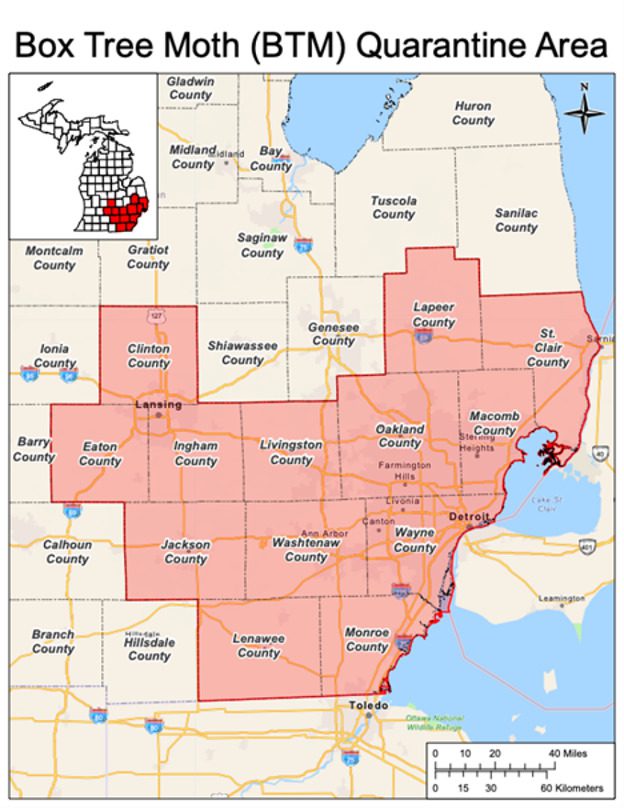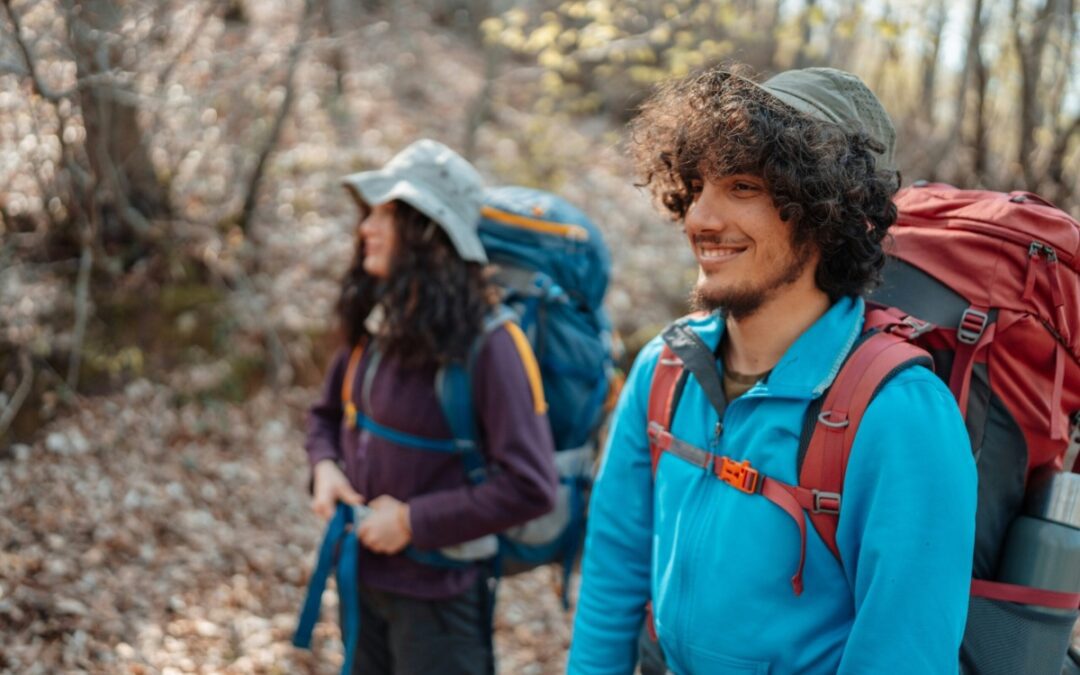
The quarantine zone for box tree moth in Michigan. Credit: Department of Agriculture and Rural Development.
By Rachel Lewis, Capital News Service
LANSING – Boxwood shrubs are popular in Michigan. Gardeners like them because their evergreen foliage brings much-needed greenery in the winter months.
Plus, deer don’t like to eat them.
Boxwoods were imported from Europe in the 17th century. Without any native predators, they thrived in the U.S.
That was until 2021, when the box tree moth was discovered in New York.
Soon after, this pest made its second U.S. appearance in a homeowner’s yard in Michigan. This prompted the state Department of Agriculture and Rural Development to issue a quarantine on the movement of infested boxwood shrub plants to prevent harm to other plants.
“The purpose of our quarantine is to slow the spread,” said Andria McCubbin, a nursery, seed & apiary specialist at the department. ”We say ‘slow the spread’ because eradication is not really an option. This is a very prolific pest. It flies really well.”

A healthy boxwood. Credit: U.S. Department of Agriculture
“But one of the major ways it spreads is through humans,” she said.
In the past two years, the quarantine area has grown from 11 to 13 counties in Southeast Michigan. That’s in addition to a federal quarantine imposed by the U.S. Department of Agriculture. The counties are Clinton, Lapeer, St. Clair, Eaton, Ingham, Livingston, Oakland, Macomb, Jackson, Washtenaw, Wayne, Lenawee and Monroe.
The quarantine means that every boxwood plant coming to the nurseries in these counties must comply with insecticide treatments and inspections from the Department.
Michigan State University Extension has been closely tracking the spread of the box tree moth.
“What homeowners should be doing is making sure that if they are pulling out plants that have been heavily infested, they’re double bagging those plants and putting them in the municipal waste, not the yard waste,” said Caitlin Splawski, a greenhouse and floriculture educator.
She added that the most important thing for homeowners to do is report any infestations to MSU Extension if they appear outside the quarantine zone.
June through September are the most common months for infestations.
Splawski said people should be on the lookout for brown leaves or a loss of leaves.
“Most often, people are going to notice the damage right around now when the caterpillars are feeding pretty aggressively,” she said. “They actually eat the leaves, so what you’ll end up seeing is defoliation of the plant.”
She said caterpillar droppings and webbings are other good ways to tell if there is an infestation.
She said although the boxwood is not native to the state, it still plays an important role in its landscape.
“There’s not quite an exact replacement for it,” Splawski said.
She said there are alternatives, but none exactly match the purpose of this plant.
“It’s going to change the landscape quite a bit. And I think it’s going to impact folks the most where there are high deer populations,” she said.
McCubbin added that if the infestation is caught early on, sometimes just cutting back the plant and letting it regrow can do the trick.
“The smaller the caterpillar, the easier it is to control,” she said. ”We’re still learning, and it’s only our third year into this.”
McCubbin said preserving the boxwood is important to the department.
“We want to protect the green industry. It’s a big plant for our nurseries, and no homeowner wants to see their shrub eaten up.”
Rachel Lewis is a newsroom production assistant reporting on the environment through the Great Lakes News Collaborative in a partnership between the Mott Foundation and Michigan State University’s Knight Center for Environmental Journalism in collaboration with Capital News Service. This story was produced for Michigan Public.

Scientists seek sources of fecal pollution that can contaminate rivers, close beaches
By Joshua Kim, Capital News Service LANSING – Water quality experts are using DNA tools to track down contamination responsible for beach closures...

Out of the 103 state parks in Michigan, here are the top 10
Get to know the best state parks in Michigan, which offer an abundance of nature-based activities, from hiking and wildlife viewing to beaches and...

No license needed. How to fish for free in Michigan this week
Grab your fishing rods, sandwiches and, maybe, a few friends for a weekend of free fishing, as the state celebrates its second free fishing weekend...

The ultimate guide to backpacking in Michigan
Check out our tips for beginners and experts alike to get you started on backpacking in Michigan this summer. If you're looking to go backpacking in...

Attention, anglers! Here are the 8 best fly fishing spots in Michigan
Get your waders out, because Michigan was voted the best state for fly fishing, and we've got the inside scoop on where to go! Fly fishing...





